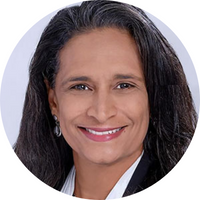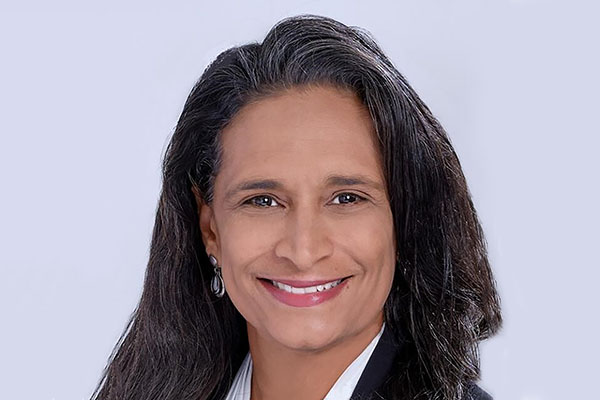
Key Takeaways:
- Carlonda's lessons learned over the years working with Dupont and Kennametal
- Carlonda weighs in on what makes a successful team leader
- Carlonda's perspective on being a woman working in industry
Part of your job is to develop and commercialize new products that deliver significant revenue growth for your company. What primary lessons have you learned over the years with DuPont and Kennametal that help you achieve greater success in this area?
There are several keys to success in delivering innovation to the marketplace. First, it is important to develop a portfolio filled with customer-validated new product opportunities that are aligned with the business strategy. Second, leaders should ensure that the right cross-functional resources are assigned and aligned to work together on the opportunities that have the greatest potential to help fulfill the strategy. A third important key is to establish a robust managing process for fast and informed decision making and to enable execution excellence.
How did you become interested in pursuing a career in science, generally, and chemical engineering, more specifically?
Math and science were always fun subjects for me, and I enjoyed relating them to practical applications. When I was a junior at Terre Haute (Indiana) North Vigo High School, I had an assignment in my science class to write about any science-related topic of my choice. I chose to write a paper about the fractional distillation of crude oil. I was fascinated by how different crude cuts were separated and how gasoline was made from oil. It was during the process for researching this paper that I came to understand a great deal about chemical engineering, and that is when I decided I wanted to become a chemical engineer.
Among other responsibilities, you are in the business of leading teams. What makes for a successful leader of teams?
The number one principle has to be establishing an environment of trust and collaboration with the people who make up the team - to care about each member, to know the strengths and challenges of each and to help each member do his/her best work. I also think an effective leader is one who can cast a compelling vision, set and articulate clear objectives and provide support where needed, and who will get out of the way and trust the team to execute. Good leaders also take the time to have fun and celebrate the wins with their teams. This is a real key to building a winning culture in the team environment. Those who know me best, know that I have a passion to win and have fun with my teams.
How have your parents influenced your leadership style?
I am truly blessed to still have my parent’s advice and influence in my life today. My parents have always taught me the “Golden Rule” – to treat others as I want to be treated. This has meant that I strive to be fair, honest and respectful to others. Additionally, my parents instilled within me a tenacious work ethic, the notion of accountability and the importance of being a person of highest integrity and authenticity. I hope that all who know and work with me would say that I am an authentic leader who communicates openly and honestly, who cultivates an environment of mutual trust and respect, and who works hard to help them achieve their individual and team aspirations.
Kennametal has thousands of employees spread across dozens of countries. What, if anything, can the U.S. learn from some of these other countries on the topic of establishing a more diverse, inclusive, respectful and equitable work environment?
Kennametal has employees in nearly 40 countries across the world and many members of the team I lead across our technology and advanced integrated manufacturing organization are located in those countries. No matter where our home office is in the world, our company values, which include respect for every person, unite us. Every day, our global teams work closely together with mutual respect for the capabilities of one another to achieve common goals for the overall success of the company. This model can teach all of us that no matter who you are or what your background has been, all members of a team have value and a voice in contributing to success, and that should be recognized and celebrated.
With respect to your scientists at Kennametal, what non-technical skills do you most highly value?
I am proud that our scientists have a passion to understand unmet customer needs and are able to apply their technical knowledge to solve our customers’ greatest challenges. Additionally, our most effective scientists are the ones who can communicate and collaborate cross-functionally both internally and externally to deliver the best solutions to the customer.
You have held a variety of leadership positions throughout your career. Is it easier now for women to move up the ladder compared to when you started? If so, what changed to enable that? And what additional shifts are necessary in order to establish a truly equitable environment?
I think we have made significant progress since I began my career 25 years ago. Earlier in my career in the 1990’s, I had a collaborator tell me I could not become a manager because I was a woman. Today, I don’t think one would hear comments like that. We have seen more and more diversity in leadership in our industry, which is great.
As an African American female executive, I feel a deep responsibility to support causes that help promote more diversity, particularly in leadership. I think that any leader should be committed to ensure that a diverse and inclusive environment exists within his/her sphere of influence. I spend a significant part of my time mentoring other women and minorities in pursuing their career dreams. Nothing gives me more pleasure than to get a call from a past or present colleague to either ask for current career advice or to report their recent successes to me. I hope that in some small way, I have helped many navigate their career successes.
What technology trends are you following most closely with an eye toward how they may impact the work of your scientists, and your company’s future growth?
New materials for tooling, wear solutions and materials that fuel our Additive Manufacturing business in order to propel greater performance and flexibility for our customers are always of interest.
But perhaps the most impactful emerging trend is in the digital arena. With various digital tools available, we now have the ability to obtain and analyze large amounts of data and machine learning capabilities that will help us develop, manufacture and get to market faster with the highest quality products. We also can link all of this power to deliver solutions to our customers more efficiently through digital collaboration. The connectivity between science and digital is quite exciting!
Kennametal operates in a diverse range of markets -- aerospace, earthworks, energy, general engineering and transportation. How do you remain sufficiently current on so many different markets?
We have marketing, sales and technology experts who know the customers and application needs in each of these markets very well. This expertise and close intimacy with the customer allows us to uncover emerging needs, and combined with our materials science and design engineering capabilities, we are able to deliver unique tooling and wear component solutions to our customers and leverage the fundamentals where appropriate, so we can serve all these markets efficiently and effectively.
In a previous ACS Boss Talk, Cabot’s Patricia Hubbard wrote the following: “This is the real challenge for Cabot and any company over the long term: How to strike the right balance between keeping a strong core while also building from positions of strength to progress into new areas. It’s hard to get right, but vitally important.” Do you agree with Patricia? And if so, how do you approach this challenge?
Fundamentally, I believe this is true, but I have seen that it can be addressed successfully through alignment on a clear business strategy. Strategy is about the choices we make in order to grow. And for Kennametal, it means that we align resources to the priorities and choices we make through our strategy, which might include strengthening the core, but we also identify those areas in which we will selectively invest for new growth. For example, Additive Manufacturing is an area that we have been focusing our strengths and capabilities on to build solutions in this exciting area.
What are some personality traits that have been most instrumental in your career success? What’s the one trait you wish you had in greater supply?
I have always tried to approach my work with dedication, passion, drive and determination. And I strive to be an authentic, reliable person, who my colleagues know can be trusted. I believe this make-up is part of what has helped me be an effective leader and positive change agent. The one trait that I wish I had more of is patience. I have often become impatient when needed change does not happen quick enough. Over the years, I have developed an appreciation for the value of going through the process of change.
You serve on the Board of Directors of St. Vincent’s College in Latrobe, PA. How did you come to be interested in supporting that college? And in what ways has the pandemic complicated the mission of the Board of Directors?
I have always had interest in serving the communities in which I work and live, and the St. Vincent College campus is located across the street from my office at our Technology Center. I have had a close-up opportunity to see the fine work St. Vincent College does at developing and educating the whole student, as well as the early learning work they support through the Fred Rogers Center at the college.
So, when I was approached by the president to serve, it was such an honor and easy decision to support this work of excellence. I also serve on the boards of the University of Delaware Research Foundation and W.L. Gore and Associates. While I miss the face-to-face interactions with all my board colleagues, there has been little disruption to meeting and conducting business during the pandemic, due to the great digital tools available.

Dr. Carlonda R. Reilly joined Kennametal Inc. (NYSE: KMT) as Vice President and Chief Technology Officer in September, 2018. As a member of the Executive Leadership Team, Dr. Reilly leads a worldwide organization of over 1,000 in Research, Development, Engineering and Advanced Integrated Manufacturing Systems at Kennametal, delivering science-based advanced materials, tooling and wear-resistant solutions to various industries. Additionally, Dr. Reilly serves on the Board of Directors for W. L. Gore and Associates, Inc. and as Chairman of the Board for Kennametal Shared Services Private Limited.
Prior to joining Kennametal, Dr. Reilly had a 22-year career with the DuPont Company, where she held successive global R&D, manufacturing, marketing and business leadership roles. She has cultivated a deep expertise throughout her career in developing and commercializing technology innovations which have proven to deliver significant value and growth.
Dr. Reilly holds a bachelor's degree from the Massachusetts Institute of Technology (M.I.T.) and a MS and PhD from the University of Delaware all in chemical engineering. She is also a Harry S. Truman Scholar. Dr. Reilly is sought out as a motivational speaker, panelist and mentor, and is a passionate advocate for diversity in STEM careers. She serves on the Advisory Board for the Carnegie Science Center and is a member of the Board of Directors for St. Vincent College and the University of Delaware Research Foundation. She also enjoys volunteering as an Executive Mentor to mid-career corporate leaders for The Advanced Leadership Initiative at Carnegie Mellon University's Tepper School of Business.
This article has been edited for length and clarity. The opinions expressed in this article are the author's own and do not necessarily reflect the view of their employer or the American Chemical Society.
Copyright 2022 American Chemical Society (All Rights Reserved)











